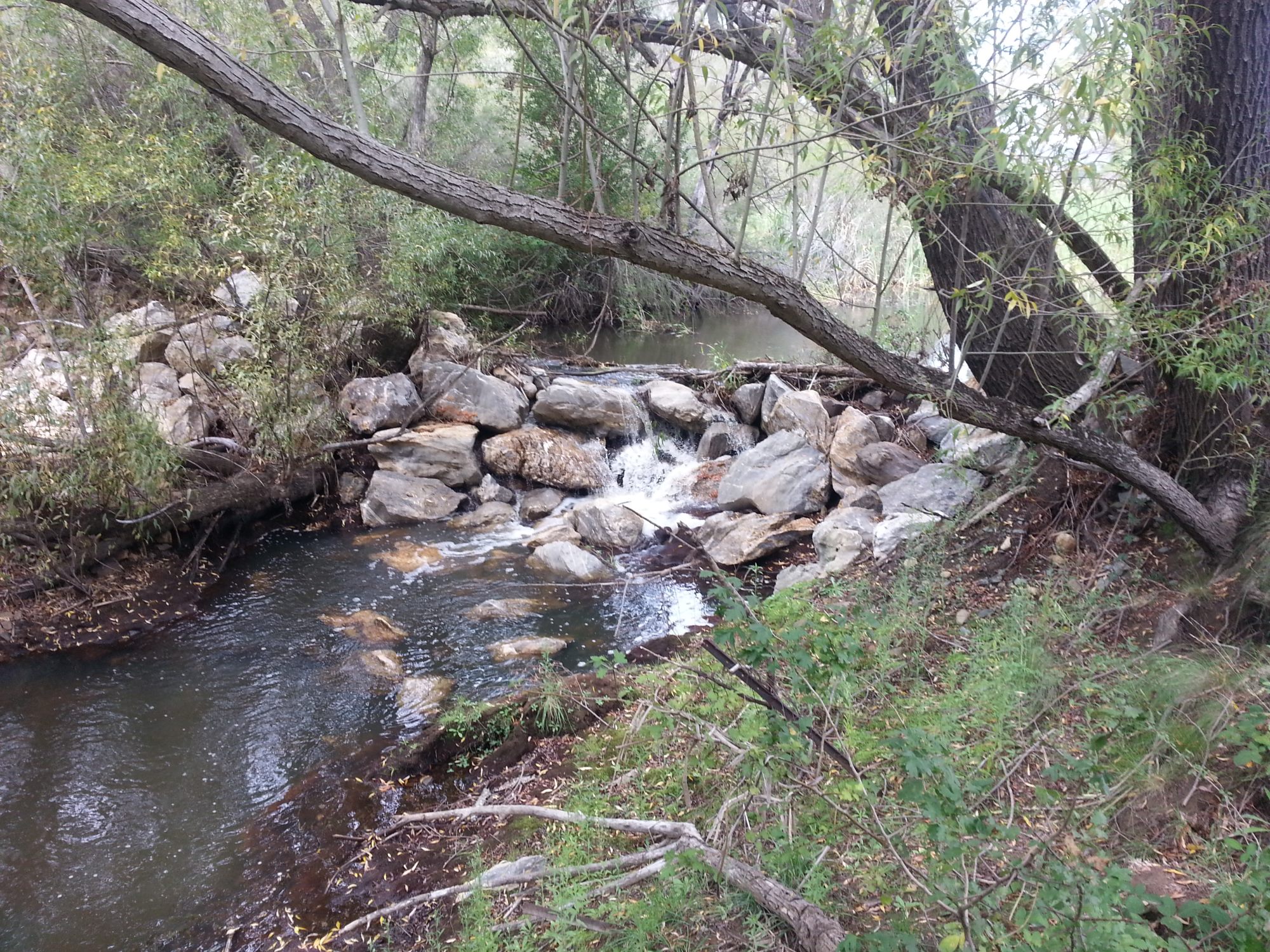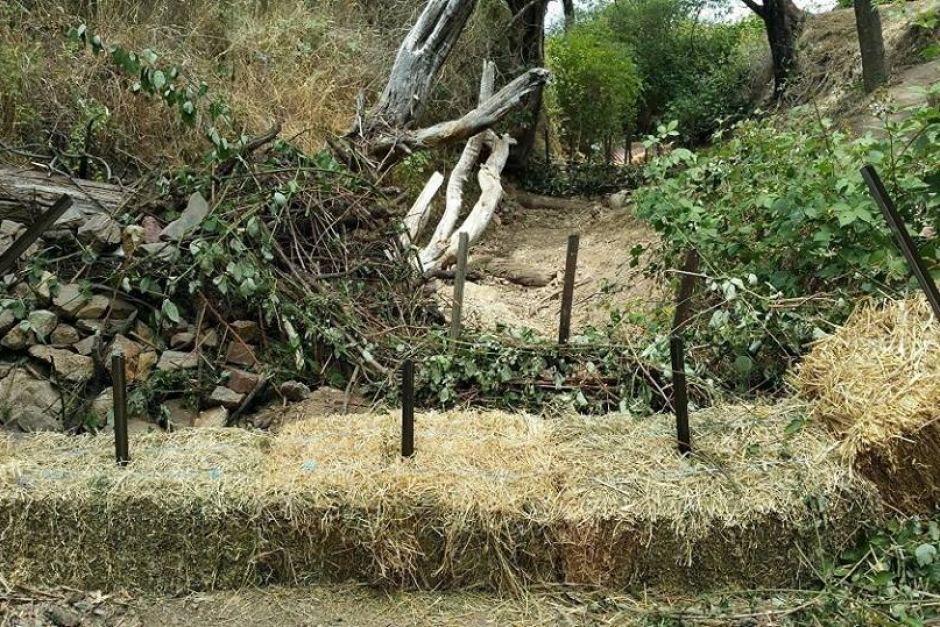Leaky weir
A leaky weir and regenerative farming
Australia is the driest inhabited continent on earth and only 6% of its land mass is arable land. Large areas of that arable land have been cleared for agriculture since the arrival of Europeans. The fertility and stability of those soils has been eroded as a consequence of this loss of vegetation. Many regions have compacted soils or are eroded to bedrock, due to hard-hooved animals, wind erosion, over-grazing (so plants can’t recover), over-tillage (which disturbs the organic life in the soil), mono-cultural plantings, and the use of herbicides, pesticides and chemical fertilisers. This means that water rushes off the land, taking topsoil with it. This produces the incised creeks and deep gullies we see around regional Australia.
These activities have brought about dramatic changes to Australian hydrology, ecology and climate. All over Australia farmers are struggling with the declining quality of their soils, irregular rainfall, high temperatures and reliance on costly chemical inputs.
Even though we don’t hear about it much in our public debates about climate change, many farmers are adapting and innovating. They are responding in practical and ingenious ways to the climate change effects they’re experiencing on their farms. One such innovation is Natural Sequence Farming. NSF was devised by Peter Andrews, and is being disseminated as a model of land rehabilitation by his son Stuart Andrews, and by organisations such as the Malloon Institute. It is a farming practice that focuses on hydrology, soil fertility and biodiversity in order to rejuvenate eroded farming landscapes. Significantly, it takes the pre-European hydrology of the Australian landscape as its starting point.

Image: Laura Fisher
Unlike many other continents that have extensive river systems, Australia had wide floodplains in which water was absorbed and stored below the ground. Wetlands interrupted the main watercourses at regular intervals: rather than flowing rivers, Australia had a ‘chain of ponds’ system. While the incised creeks of today rapidly remove water from landscapes that desperately need it, in the past there was little evaporation loss in the floodplains, and landscapes were sustained through dry periods.
The specific dimension of NSF I’m focusing on is the ‘leaky weir.’ It is a core strategy of NSF to create blockages in streams and gullies, to ‘slow the flow.’ These blockages can be made from a mix of materials, such as rocks, logs, hay bales, and hardy plants and trees. The build-up of sediment leads to the establishment of wetlands that support animal life and clean the water, preventing farming chemicals from entering the sea. Watercourses are reconnected with floodplains, and gullies fill up with earth and plants once again.

Image: Mulloon Institute
NSF remains highly controversial, because it contests the common practice of irrigating from dams and many other aspects of industrial agriculture. It is also explicitly non-nativist, or plant ‘agnostic’: ‘invasive species’ like blackberries and willows are utilised for their capacity to restore functionality to farming landscapes. Rather than being removed, weeds in general are treated as succession species because of their capacity to bring carbon and fertility to the soil.
NSF, and the leaky weir as a single tangible dimension of it, is a kind of prism through which to both historicise the Anthropocene in Australia and speculate about the future of regenerative farming and land rehabilitation.
- It confronts us with important questions about how we revegetate eroded land and thus recreate cooler microclimates and increase plant evaporation into the atmosphere—vital for localised rainfall patterns
- It reveals in what way grazing animals have both caused land erosion but can play a vital role in its rehabilitation
- It challenges us to interrogate our attitude to native species and ‘weeds’, to examine what ‘is’ in existence as a consequence of migration and development, not what ‘ought’ to be, and to act accordingly to restore functional ecology in food producing landscapes

